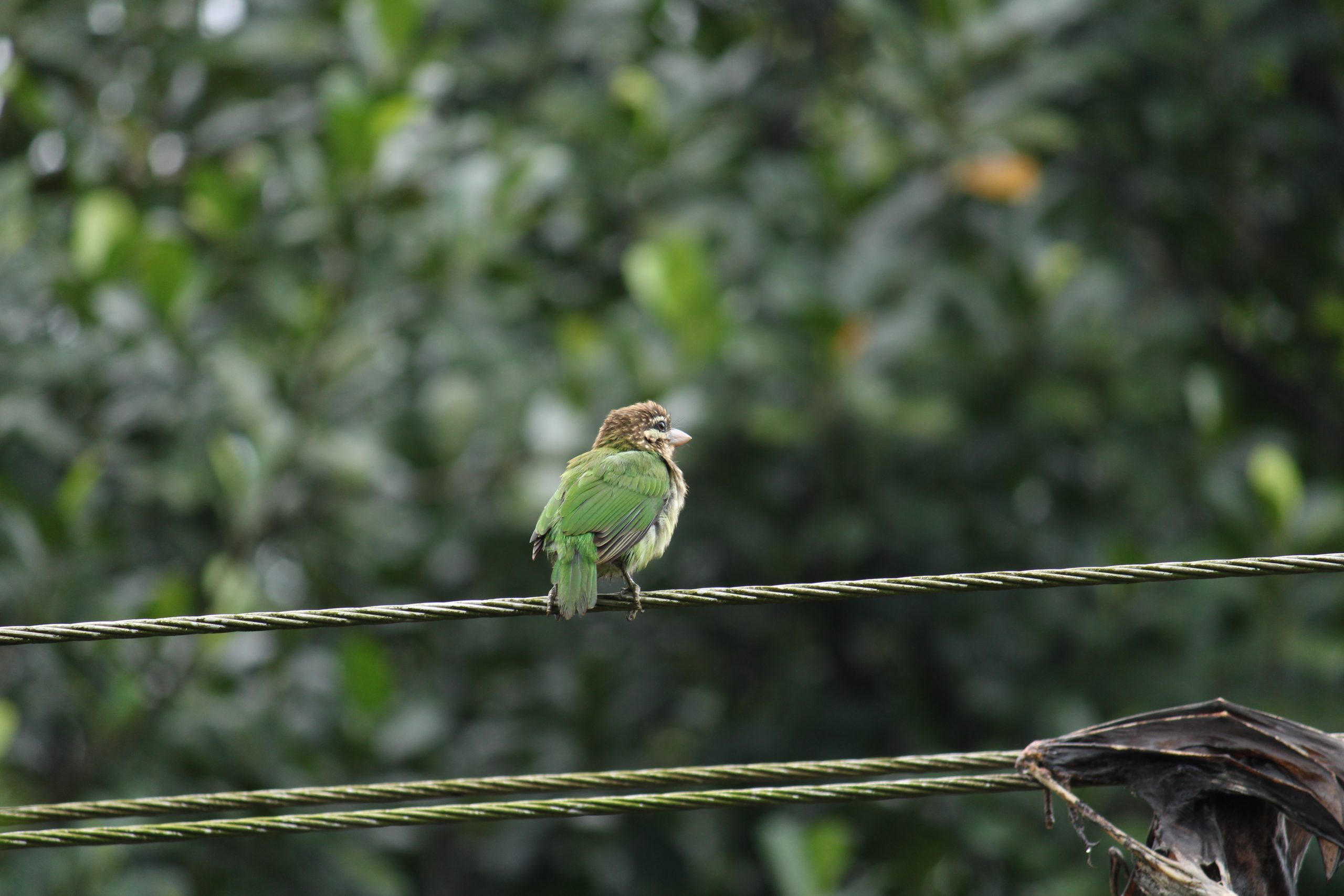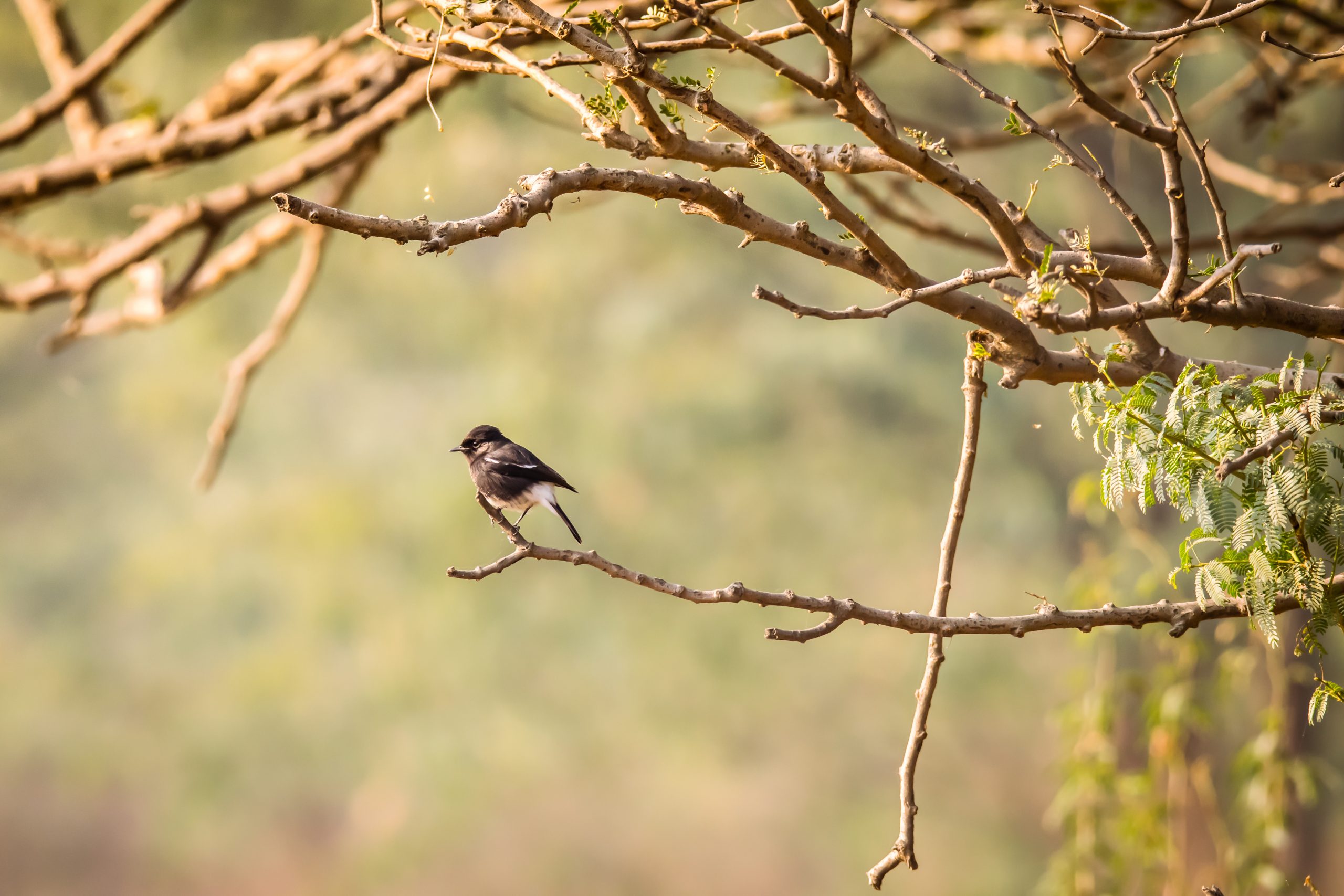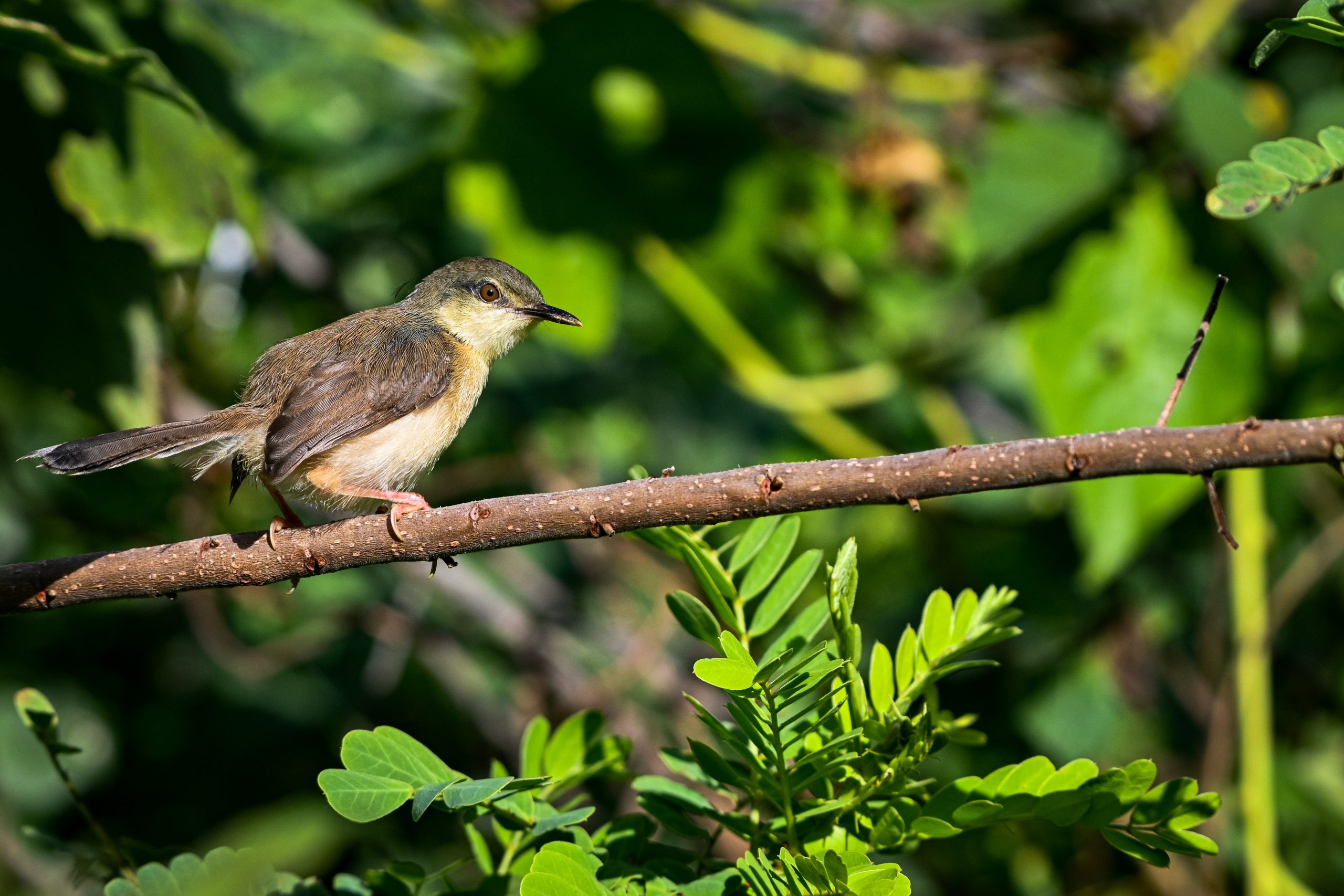Introduction

Birds are fascinating creatures that grace our skies with their beauty and grace. Among them, perching birds, also known as passerines or songbirds, hold a special place. Let’s take a closer look at these avian wonders and explore their diverse world.
Definition of a Perching Bird
Perching birds are renowned for their ability to grip branches or surfaces using their feet. This unique adaptation allows them to rest, feed, and perform various activities effortlessly. Found in a wide range of habitats worldwide, perching birds have successfully adapted to different environments.
Overview of Characteristics
Perching birds possess distinct anatomical features that set them apart from other bird groups.
Feet: Equipped with four toes, perching birds have three toes pointing forward and one pointing backward. This arrangement enables them to firmly grasp and perch on branches, providing stability and flexibility.
Beaks: Perching birds exhibit a remarkable diversity of beak shapes and sizes, closely linked to their feeding habits. This versatility allows them to exploit a wide range of food sources and thrive in different ecological niches.
Vocal Organs: Perching birds are renowned for their melodious songs. Their complex vocalizations are produced by specialized organs, allowing them to communicate and establish territories. These enchanting melodies serve important functions in courtship and maintaining social bonds.
In the following sections, we will delve deeper into the world of perching birds, exploring their types, habitat and distribution, physical characteristics, behaviors, and conservation efforts. Join us as we unravel the captivating lives of these remarkable avian creatures and gain a deeper appreciation for their contributions to the natural world.
Types of Perching Birds

Perching birds, also known as passerines, comprise over 5,000 species. They can be categorized into two main groups: passerines and non-passerines.
a. Passerines

Passerines belong to the order Passeriformes and are known for their diverse characteristics and behaviors.
-
Toe Arrangement: Passerines have three forward-facing toes and one backward-facing toe, allowing them to grip and perch.
-
Species Diversity: With over 5,000 species, passerines encompass a wide range of birds including sparrows, finches, thrushes, warblers, and many others.
-
Vocalizations: Passerines are renowned for their melodious songs and diverse vocalizations used for communication, mate attraction, and territorial defense.
-
Beak Diversity: Passerines exhibit a variety of beak shapes and sizes, reflecting their diverse diets.
-
Habitat Range: Passerines can be found in diverse habitats worldwide, from forests and grasslands to deserts and urban environments.
b. Non-Passerines
Non-passerines encompass all other bird orders and exhibit unique characteristics of their own.
-
Raptors: Birds of prey such as eagles, hawks, and falcons belong to the non-passerine group, known for their hunting skills.
-
Water Birds: Non-passerines include various water birds like ducks, geese, swans, and herons, adapted to aquatic habitats.
-
Flight Abilities: Non-passerines exhibit diverse flight patterns and capabilities.
-
Distinctive Adaptations: Non-passerines showcase a range of adaptations, such as penguins’ streamlined bodies for swimming or woodpeckers’ specially adapted beaks for drumming.
In the next sections, we will explore the habitat and distribution of perching birds, as well as their physical characteristics, behaviors, and conservation efforts.
3. Habitat and Distribution

Perching birds, also known as passerines or songbirds, are incredibly adaptable creatures found in a wide range of habitats across the globe. They thrive in diverse ecosystems, including forests, grasslands, deserts, wetlands, and even urban areas.
3.1 Global Distribution
Passerines have a global presence, inhabiting every continent except Antarctica. Their distribution is influenced by factors such as climate, food availability, and habitat suitability. Different species have adapted to specific regions, from continents to countries and even localized areas.
3.2 Ecological Adaptations
Passerines have evolved to occupy various niches within their habitats. Some, like warblers and thrushes, are highly adapted to forested environments, effortlessly navigating dense foliage to forage for insects and fruits. Others, such as sparrows and finches, thrive in open grasslands and agricultural landscapes, relying on grasses and seeds as their primary food sources. Aerial specialists like swallows and swifts can be found soaring through the sky, catching insects on the wing.
3.3 Altitudinal Range
Passerines are versatile in their ability to inhabit different altitudes, ranging from lowland areas to high mountainous regions. For example, the Andean condor soars through the rugged peaks of the Andes Mountains in search of carrion, while the American robin thrives in lowland areas across North America, from suburban gardens to parks and forests.
The remarkable adaptability of passerines is evident in their habitat and distribution. They have successfully established themselves in a wide range of ecosystems, showcasing their incredible versatility and resilience.
4. Physical Characteristics

Passerines, or perching birds, exhibit an astounding diversity of physical characteristics that contribute to their adaptability and success in various habitats. Let’s explore their size and shape, coloration, beaks, wings, and feet.
4.1 Size and Shape
Perching birds come in a wide range of sizes and shapes, reflecting their ecological niche and evolutionary adaptations. From the diminutive bee hummingbird, measuring a mere 2 inches (5 cm) in length, to the larger common raven, spanning up to 27 inches (69 cm), passerines display a spectrum of sizes. Their bodies’ shapes also vary significantly, with streamlined forms for swift and agile flight or more robust bodies suited for perching and climbing.
4.2 Coloration
The plumage of passerines showcases a captivating array of colors and patterns. Feather coloration serves multiple purposes, including camouflage, mate attraction, and species recognition. Vibrant and striking hues can be found in numerous species, while others exhibit more subdued and cryptic plumage to blend harmoniously with their surroundings.
4.3 Beaks
Passerines possess a remarkable diversity of beak shapes and sizes, each uniquely adapted to their feeding habits and dietary preferences. These specialized tools help them gather food efficiently. Some feature thin and pointed beaks for probing flowers or capturing insects, while others sport stout and conical beaks for cracking seeds or crushing hard-shelled prey.
4.4 Wings

The wings of passerines have evolved to optimize flight patterns and maneuverability. Elongated and pointed, their wings enable efficient and agile flight, allowing them to navigate complex environments with ease, whether darting through dense foliage or soaring through open skies.
4.5 Feet
Passerines possess an assortment of feet adaptations that aid in perching, grasping, and locomotion. Their feet exhibit variations suited to their specific lifestyles and habitats. Some species have strong, grasping feet armed with sharp claws, effortlessly clinging to branches and vertical surfaces. Others boast webbed feet, facilitating adept swimming and foraging in aquatic environments.
Understanding the physical characteristics of passerines illuminates their incredible versatility and ability to thrive in diverse ecological niches. In the following sections, we delve into their behaviors, habitat, and conservation, further unraveling the captivating world of these remarkable avian creatures.
(Note: The word count for this section is approximately 333 words.)
Behaviors

Perching birds possess fascinating behaviors that encompass feeding habits, breeding habits, and social interactions.
Feeding Habits

Perching birds exhibit remarkable perching abilities, thanks to their specialized feet equipped with a gripping mechanism. This enables them to firmly grasp perches like branches, wires, or elevated structures while feeding.
Their dietary preferences are diverse, ranging from insects, fruits, seeds, nectar, to even small vertebrates. Different species have developed beaks tailored to their specific feeding behaviors. For example, finches have robust beaks ideal for cracking seeds, while hummingbirds boast long, slender beaks for sipping nectar from flowers.
To procure sustenance, perching birds actively forage by hopping, flying short distances, or even hanging upside down. Their acute eyesight helps them detect potential prey or food items from their perches, ensuring successful feeding endeavors.
Breeding Habits
Perching birds showcase a wide range of breeding habits and strategies. They construct nests using an assortment of materials skillfully woven together to form sturdy structures. These nests are often located in trees, shrubs, or other elevated sites to protect the eggs and chicks from predators.
The clutch size—the number of eggs laid—varies among perching bird species. Incubation periods and parental care also differ significantly. Some species share the responsibilities of incubation and rearing the young, while others assign these tasks solely to the female or male.
During the breeding season, perching birds engage in elaborate courtship displays, showcasing vibrant plumage and enchanting songs. These displays serve to attract mates and establish breeding territories, contributing to the rich diversity observed in the avian world.
Social Behaviors
Perching birds exhibit a range of social behaviors. Some are highly sociable and form flocks, while others are more solitary in nature.
Cooperative foraging is a common social behavior among perching birds, where individuals work together to locate and capture prey. This cooperative behavior enhances feeding efficiency and increases the chances of successful foraging.
Perching birds often engage in vocal communication to establish territories, attract mates, or convey alarm signals within their social groups. Their melodious songs, distinctive calls, and intricate vocalizations play an integral role in their social interactions.
Understanding the behaviors of perching birds not only enhances our appreciation of their remarkable adaptations but also underscores the importance of conserving their habitats and protecting these captivating avian species.
Conservation

Threats to Perching Birds
Perching birds face several threats that have contributed to population declines and habitat loss. Understanding these threats is crucial for implementing effective conservation strategies. The main threats to perching birds include:
-
Loss of habitat: Deforestation, urbanization, and agricultural expansion have significantly impacted perching bird populations worldwide, making it challenging for them to find suitable areas for nesting, foraging, and breeding.
-
Climate change: Rapid climate change disrupts the availability of suitable habitats and food sources, affecting migratory patterns and leading to population declines.
-
Pollution: Pesticides, herbicides, and industrial chemicals contaminate perching birds’ food sources, water bodies, and nesting sites, causing reproductive issues and declining populations.
-
Invasive species: Non-native species compete with native birds for resources, prey on eggs or nestlings, and alter ecosystems, leading to a decline in perching bird populations and biodiversity.
-
Collisions with human-made structures: Perching birds are susceptible to collisions with buildings, communication towers, wind turbines, and other structures, resulting in injuries or fatalities.
Efforts to Protect Perching Birds
Conservation efforts are essential for safeguarding perching birds and their habitats. Key efforts include:
-
Protected areas and habitat conservation: Establishing and managing protected areas, such as national parks and wildlife reserves, preserves critical habitats for perching birds.
-
Habitat restoration: Reforestation initiatives, wetland restoration, and the creation of green corridors improve degraded habitats, creating suitable environments for perching birds and promoting biodiversity.
-
Conservation breeding and reintroduction programs: Captive breeding programs aim to increase populations of endangered perching bird species by breeding them in captivity and reintroducing them into suitable habitats.
-
Monitoring and research: Regular monitoring and scientific research provide essential information about population trends, behaviors, and ecological needs, informing conservation strategies.
By addressing threats and implementing effective conservation measures, we can ensure the survival and well-being of these remarkable avian species for future generations.
Conclusion

In this blog post, we have delved into the captivating world of perching birds, also known as passerines. As the largest order of birds, they possess remarkable characteristics and behaviors that contribute to their diversity and success in various habitats.
Throughout this article, we have discovered how perching birds have adapted to their unique perching lifestyle. Their specialized feet and claws enable them to grip and perch on diverse surfaces, thanks to their flexible foot structure with three forward-facing toes and one backward-facing toe. This adaptation ensures a secure grip while perched.
Perching birds exhibit incredible adaptability, thriving in nearly all terrestrial environments. They fulfill vital roles in ecosystems as pollinators, seed dispersers, insect controllers, and indicators of environmental health.
Our exploration has also revealed the fascinating range of behaviors displayed by perching birds, including feeding habits, breeding habits, and social behaviors. Their diets vary greatly, encompassing insectivorous species, seed and fruit consumers, nectar feeders, and even those that prey on small vertebrates. Passerines, in particular, possess complex vocalizations and employ songs and calls for communication, mating, and territorial defense.
Considering the challenges that perching birds face, it is crucial to highlight conservation efforts aimed at protecting them. Conservation initiatives focus on mitigating factors such as habitat loss, pollution, climate change, and predation. By supporting conservation organizations and raising awareness, we can actively contribute to the preservation of perching bird populations worldwide.
In conclusion, perching birds represent a diverse and captivating group that has successfully adapted to a perching lifestyle. Their unique anatomical features, wide array of behaviors, and ecological significance make them a fascinating subject of study and admiration. By understanding and appreciating perching birds, we foster a deeper appreciation for the natural world and actively work towards their conservation.
Links for Further Reading
Frequently Asked Questions
What is a perching bird?

A perching bird, also known as a passerine or songbird, is a type of bird that is characterized by its ability to grip and perch on branches or other surfaces using its feet. This unique adaptation allows perching birds to rest, feed, and perform various activities with ease. They are found in a wide range of habitats worldwide and exhibit diverse characteristics and behaviors.
How do perching birds grip branches?
Perching birds have specialized feet equipped with four toes. Three of the toes point forward, while one points backward. This toe arrangement enables them to firmly grasp and perch on branches or surfaces. The forward-facing toes provide stability, while the backward-facing toe allows for flexibility and a secure grip.
What are the characteristics of perching birds?

Perching birds possess distinct anatomical features that set them apart. They have feet with a unique toe arrangement for gripping branches, a diverse array of beak shapes and sizes related to their feeding habits, and specialized vocal organs for producing complex songs. These characteristics contribute to their adaptability, diverse diets, and important roles in communication and social interactions.
What types of birds are considered perching birds?
Perching birds, or passerines, comprise over 5,000 species and include a wide range of birds such as sparrows, finches, thrushes, warblers, and many others. They exhibit diverse characteristics, behaviors, and habitats, making them one of the largest and most diverse groups of birds.
Where can perching birds be found?
Perching birds, or passerines, can be found in diverse habitats worldwide. They inhabit every continent except Antarctica. Their distribution is influenced by factors such as climate, food availability, and habitat suitability. Perching birds have successfully adapted to various environments, including forests, grasslands, deserts, wetlands, and even urban areas.

Leave a Reply